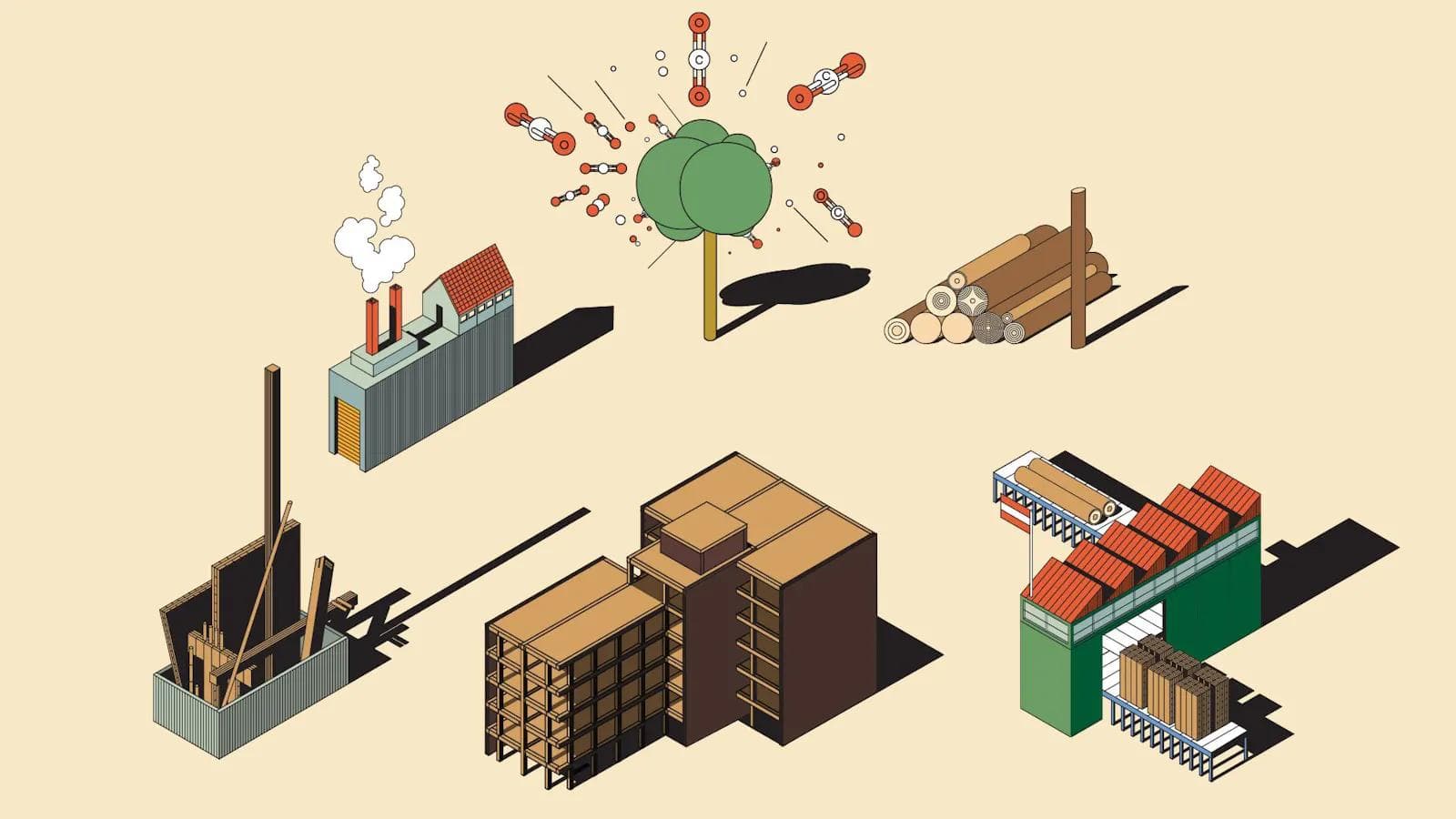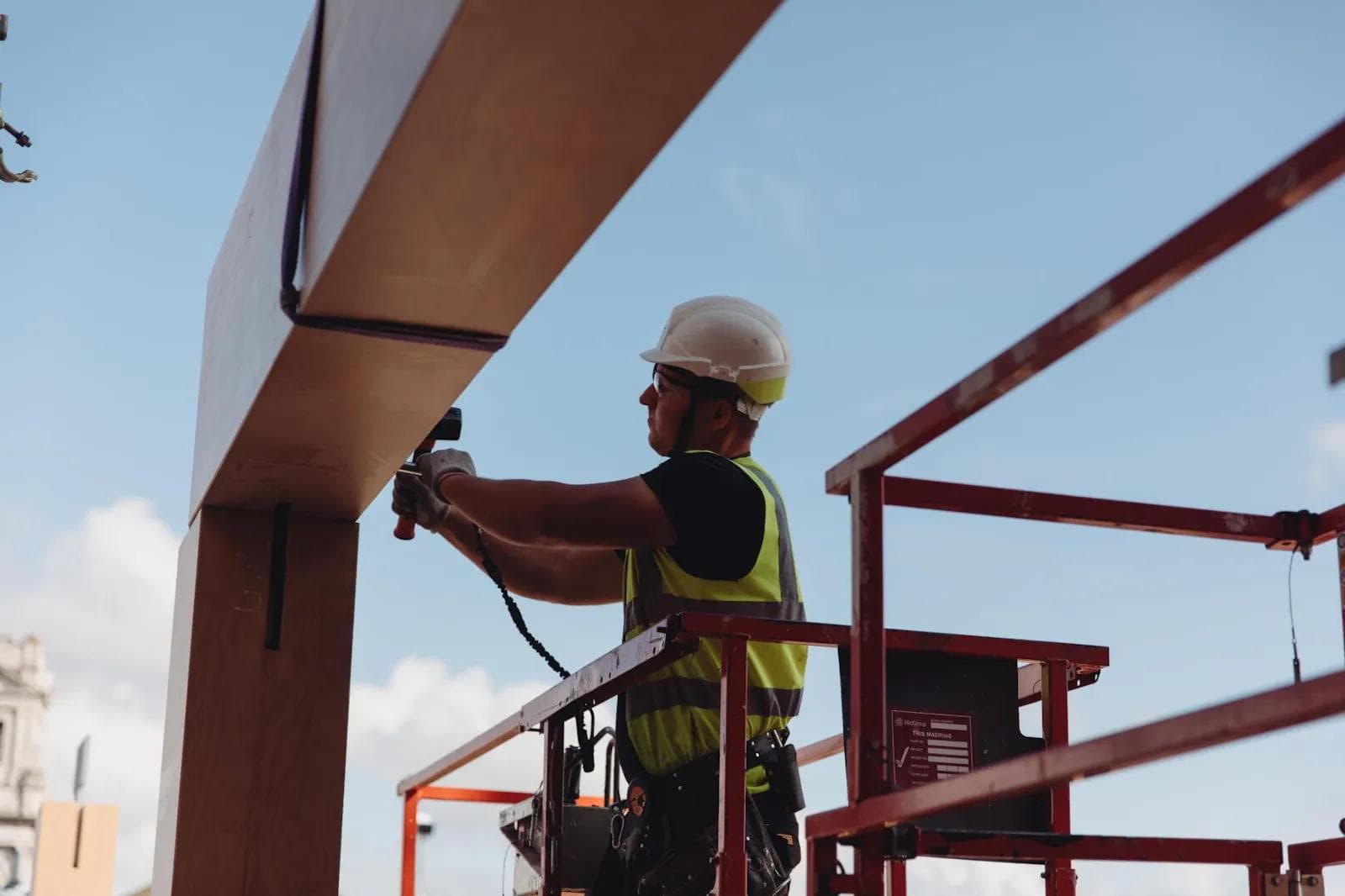
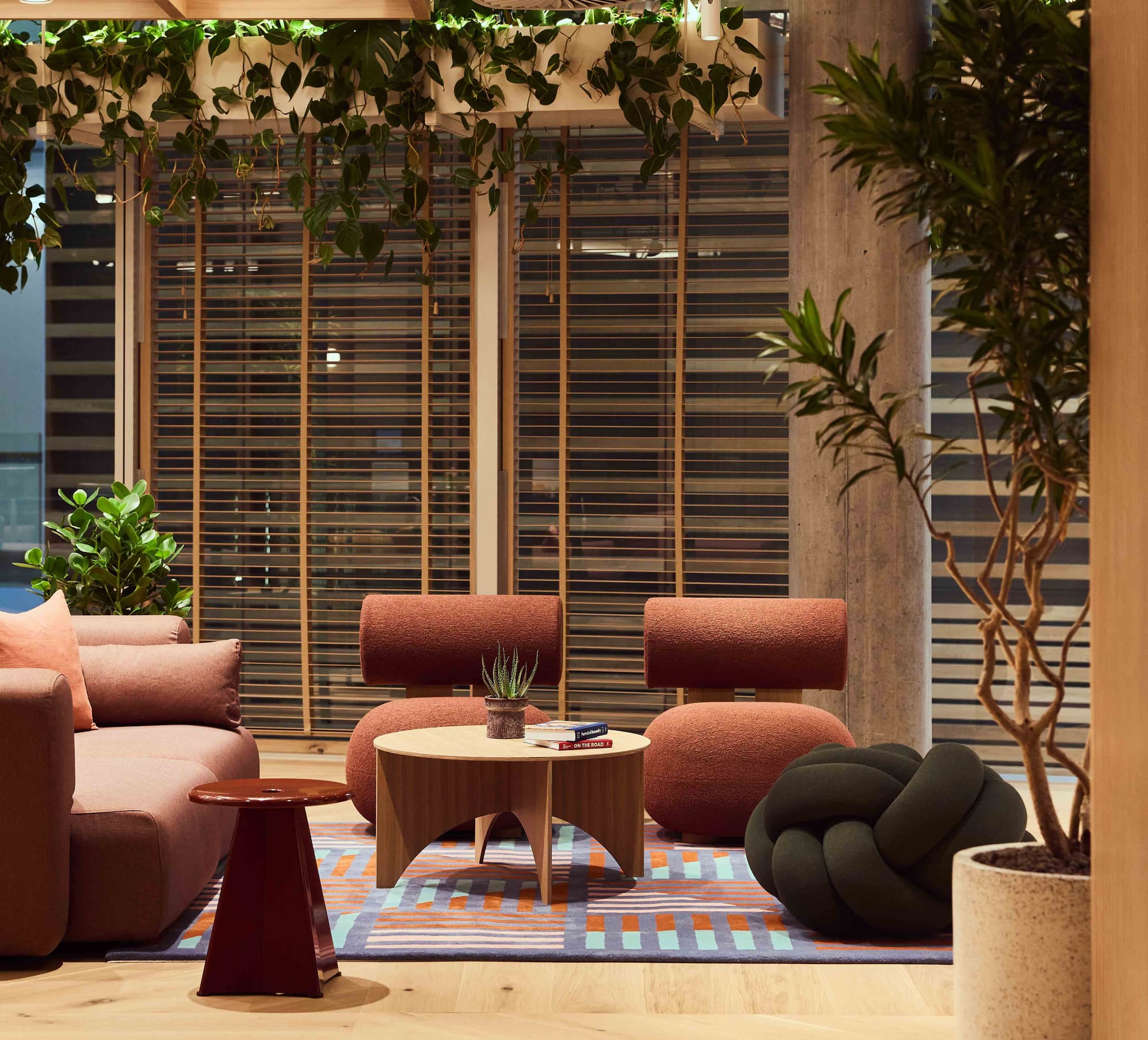
Bringing the outside in: the benefits of biophilia
A look at five of Fora’s finest locations revealing how thoughtfully curated green workspaces encourage productivity and a sense of health and wellbeing.
- Written by
- Cathy Hawker
2. Seating area and terrace at 42 Berners Street, Fitzrovia
Seamlessly bringing together the indoors and outdoors, the seating area and terrace at 42 Berners Street offers comfy seating amongst a jungle of foliage, with floor-to-ceiling windows and an open terrace opposite to let in natural light. The greenery in this space however is not only a thing of beauty but also highly productive, thanks to the involvement of Square Miles Farms. They are a company dedicated to “office farming”, using hydroponic technology to grow herbs and vegetables indoors year-round. Work at 42 Berners Street by day and pick your own herbs to take home for the evening from the on-site green walls and farmstands.
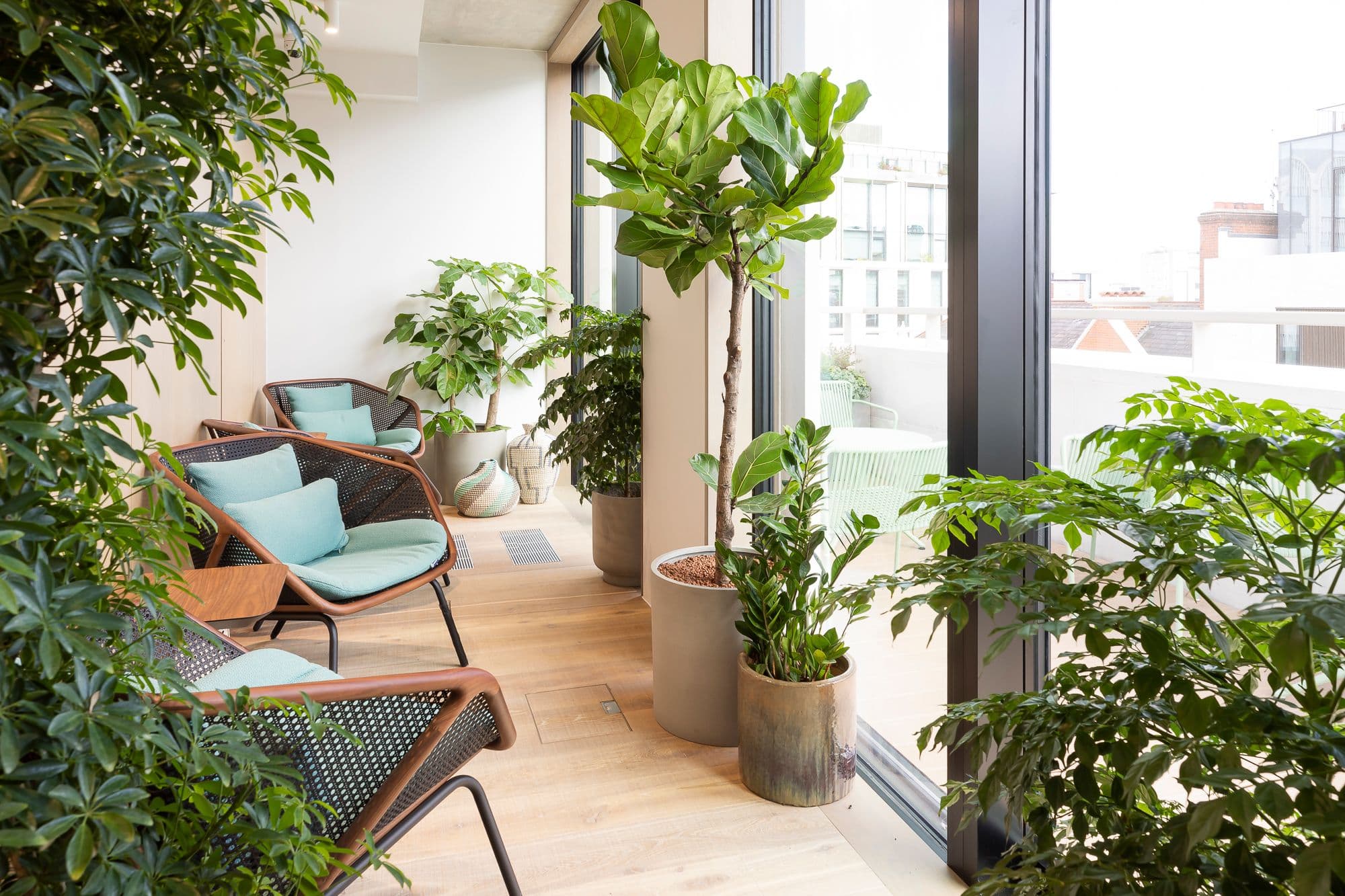
3. The living wall at Montacute Yards, Shoreditch
Walk into the workplace lobby of Montacute Yards, Fora’s workspace in London’s creative heartland of Shoreditch, and the instant beauty and spirit-lifting powers of a living wall are apparent. There are over 2,000 individual plants in the 54 square metre wall, with assorted textures and shades to enhance interest and depth. The brief from Fora was to bring the outside in and the result is a sustainable and biophilic aspect with the use of foliage including the bird’s-nest fern, formally known as Asplenium Antiquum.
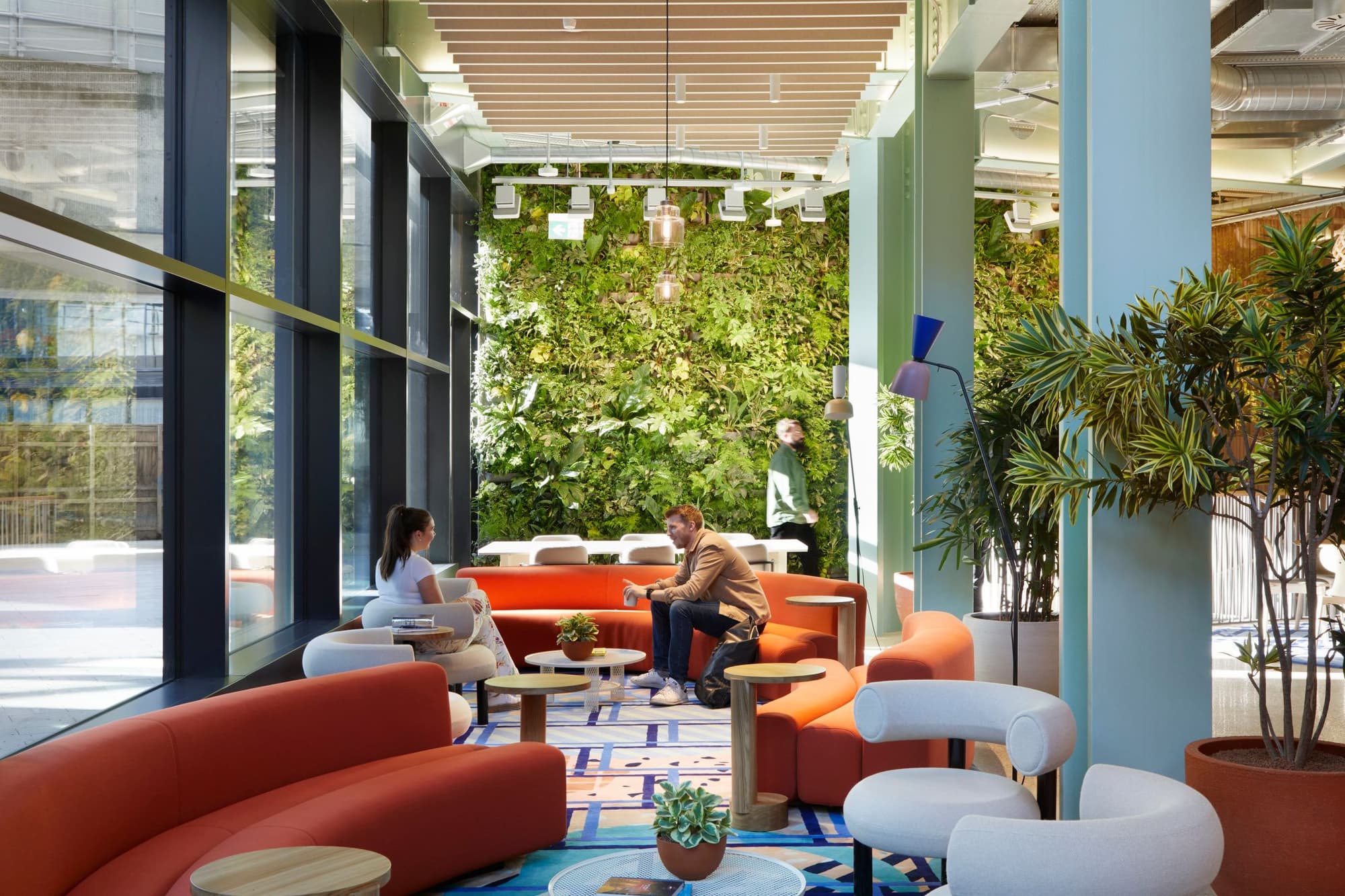
4. The coworking lounge at Great Eastern Street, Shoreditch
Great Eastern Street, another of Fora’s nine Shoreditch locations, offers office space where ultra-modern interiors mix in with a distinct New York loft style. In the lounge on Floor 7, high-level planters filled with overhanging plants and expansive glass windows and doors leading onto the terrace promote a seamless indoor-outdoor sensation. Inside, plants are grouped around private corners and relaxed communal spaces, proving to be an essential building block in creating a calm community in one of London’s most vibrant neighbourhoods.
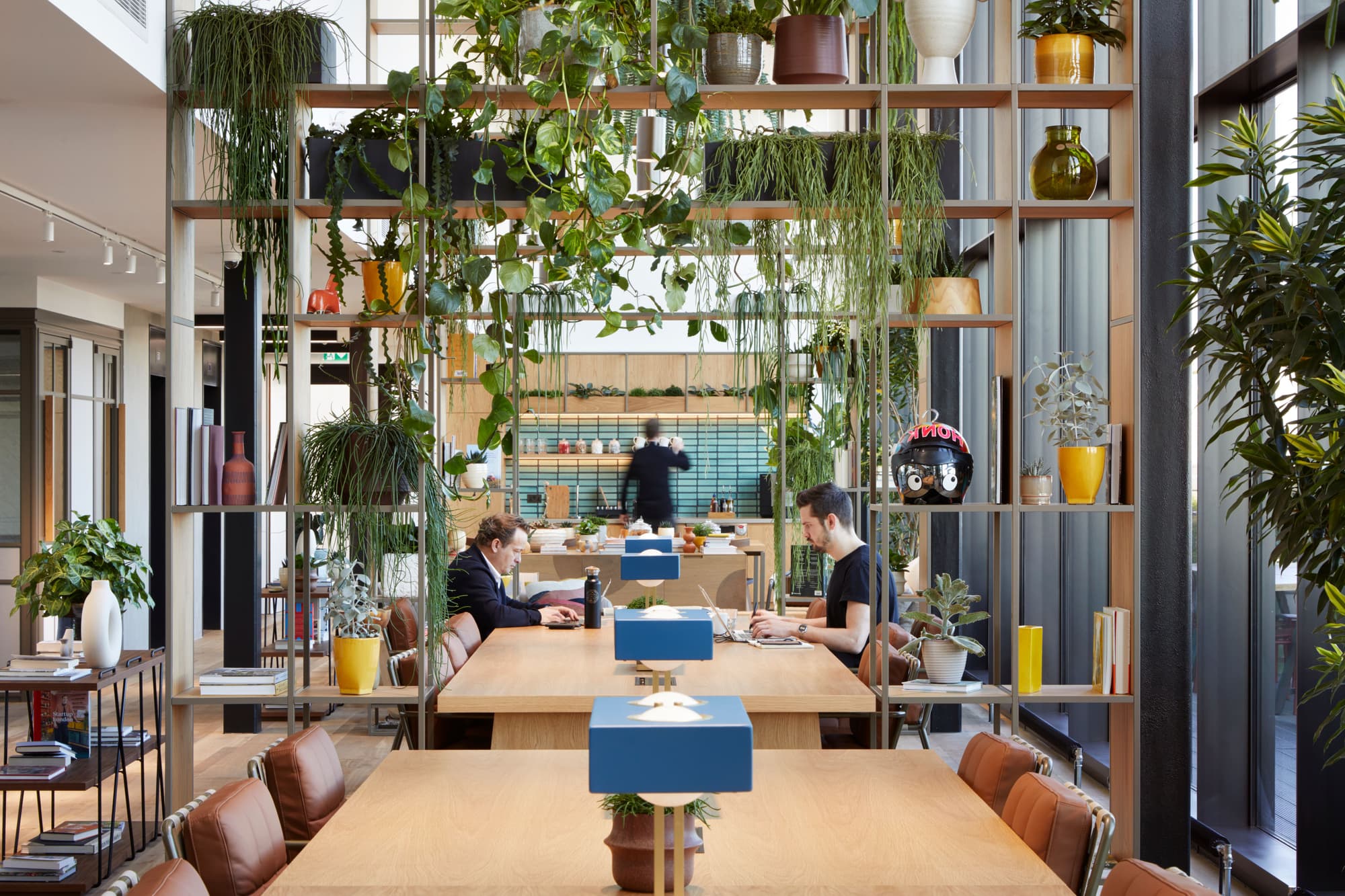
5. The café at Henry Wood House, West End
Henry Wood House, a 1960s West End building, has become a “real destination for greenery, an oasis at the top of Regent Street,” says Claire McPoland, Design Lead at Fora. “We’ve played with texture, choosing plants with exposed trunks that playfully reiterate the design of the building itself,” she says. “People generally feel most comfortable when they have their back to a wall so in the café we have incorporated a wall of plants in the central area of the long banquette and also used plants in clusters, inside and on the terraces.” In the large courtyard garden, a rarity among the dense concrete of this city central area, plants signal distinct zones and can be easily moved to create the appropriate setting for evening events.
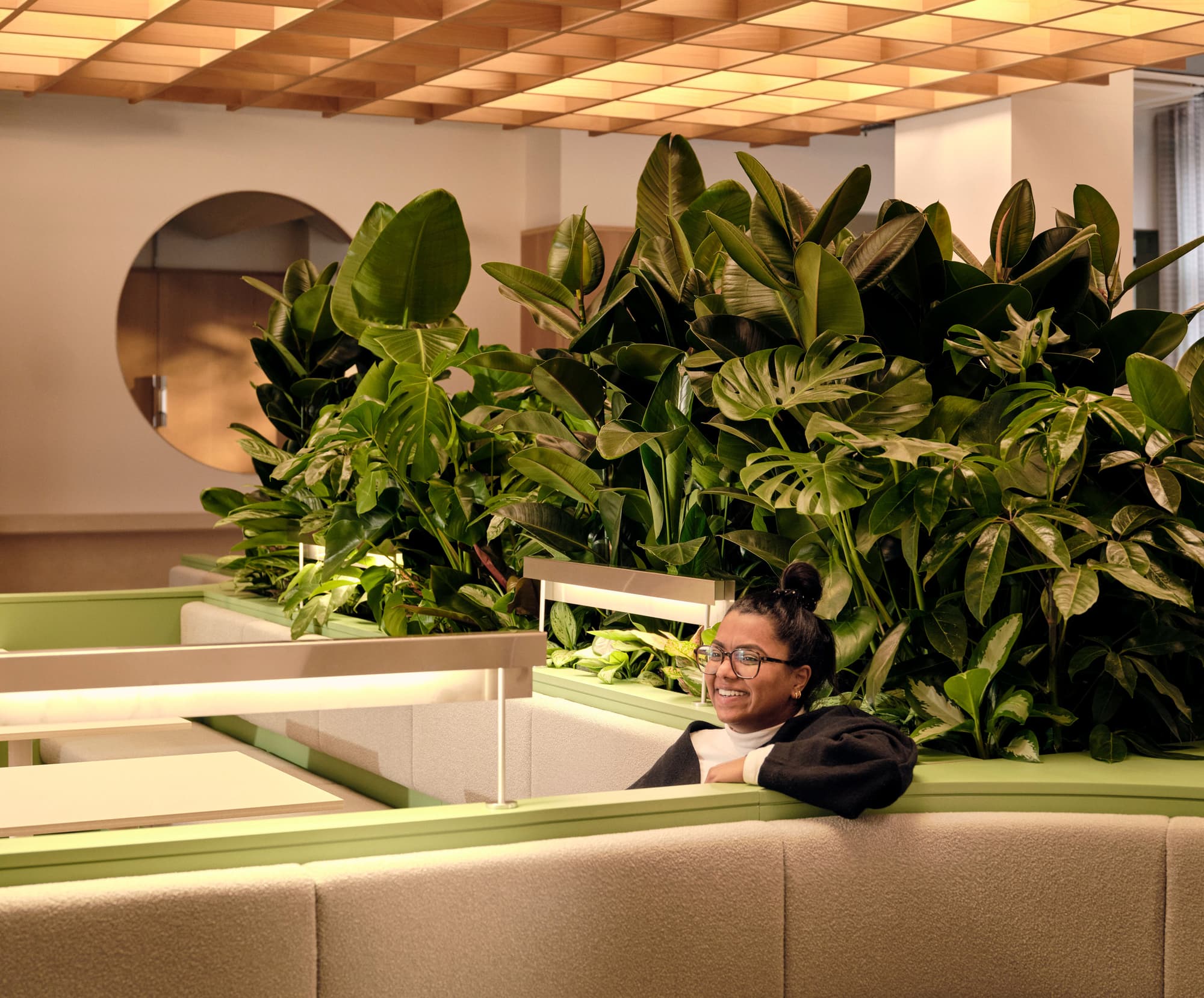
In each of these five buildings, the concept of biophilia has brought a fresh and inspiring green perspective to a city workspace. The overwhelmingly positive feedback from those using the space shows the value they place on it, with comments focusing on the indoor-outdoor connectivity, the productivity biophilia encourages and the natural beauty of skilful planting. By using a diversity of plants and placing them within built elements of design, around joinery for example, Fora’s Design & Development team give biophilia a feeling of permanence, providing a home where the plants can thrive and creating a wonderfully immersive working environment.
“For over 20 years, studies have shown the benefits of a workspace with excellent natural light in surroundings of natural greenery so while biophilia is only one of many key elements in good design, it is a very important one,” says Claire McPoland. “We think deeply about the plants we use, including using species not typically found in offices, and work closely with our partners to make sure plants are placed where they will thrive.”
Author’s bio:
Cathy Hawker is a freelance journalist who has specialised in residential and commercial property, interiors and design for over 20 years. She writes on UK and overseas property for a range of publications including The Sunday Times, The Times, HTSI at The Financial Times and The London Standard.
Get to know us better
